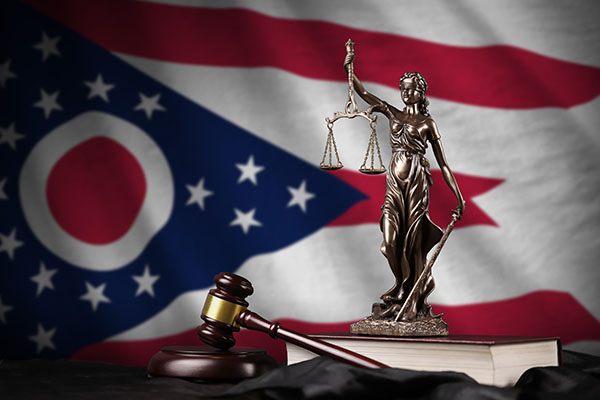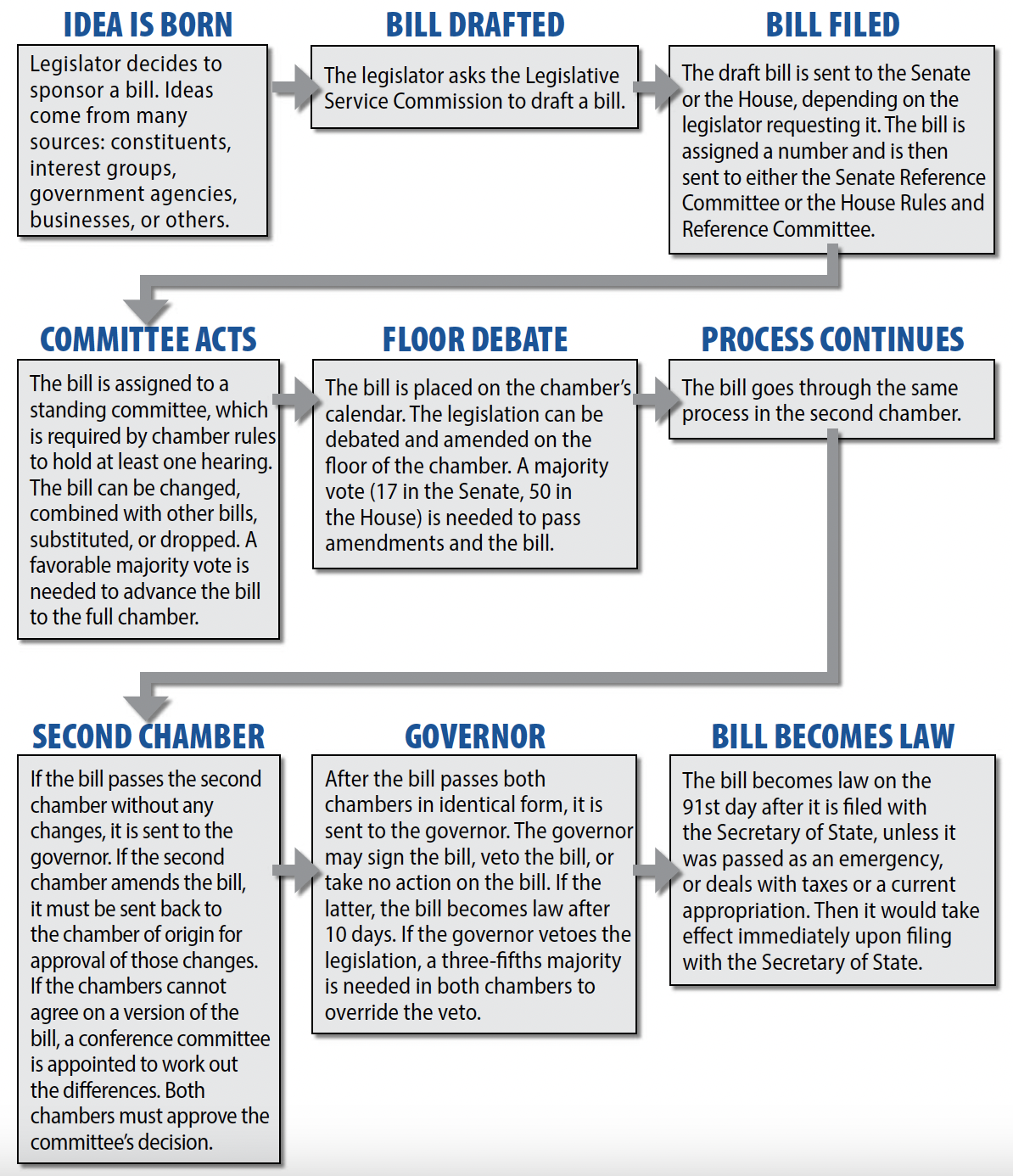How Utility Legislation Becomes Law in Ohio

More than 4.5 million residential households are affected by Ohio’s utility laws daily. These laws control the rates and consumer protections for electric, natural gas, telephone, and water services. A law begins as an idea, which then goes through many steps to become a law. Here is how it happens.
Anyone can come up with an idea for a new law: a concerned citizen, business, legislator, state agency, the governor, a lobbyist, or other group. The new law could even be the result of a court decision, or an action taken by the federal government.
Ohio Legislative Service Commission
The staff of Ohio Legislative Service Commission (LSC) writes all legislation. The LSC then makes sure the bill does not conflict with other laws and that the legislation is technically accurate. Some bills are very short, like ones naming a bridge. Others are very long, like the state’s 5,000 plus page Ohio budget. More information about LSC can be found on its website at www.lsc.ohio.gov.
The time it takes for a policy to go from an idea to law changes depending on:
- The subject of a proposed law;
- The perceived need to act on the bill’s contents;
- The detail required in writing it and/or when legislation is introduced.
A law could be created in a matter of days, or it could take years. The process for many of the state’s laws can stretch over many terms of the General Assembly.
The General Assembly
A term, or session, of the General Assembly is two years. Legislators (the 33 member Senate and the 99 member House of Representatives) usually schedule committee hearings, and full House or Senate meetings, to discuss proposed bills on Tuesday, Wednesday, and Thursday of each week. Some meetings occur on other days of the week, though that is rare. The schedules are posted on the website of the General Assembly www.legislature.ohio.gov/schedules/session-schedule. With its three-day work week and breaks during the year, the General Assembly typically meets in Columbus less than 100 days in a given year.
After a bill is introduced, it is assigned to a legislative committee relevant to the bill’s topic. Each bill goes through hearings in its committee. The number of hearings depends upon how complex the bill is and the level of support it has. These hearings are open to the public, and anyone can speak for or against the legislation. To proceed, a bill must receive at least a majority of “yes” votes from the committee members, who may change the legislation with amendments or combine similar bills.
The bill then goes to the chamber’s (House or Senate) Rules Committee. It selects the bills for floor votes on any given day. A bill sent to the chamber floor can be debated by all members of the chamber and changed before it is voted on. To pass, a bill must receive a majority vote.
The Governor
Once the bill passes in one chamber, it is sent to the other chamber, where it goes through the same process. Both chambers must agree on the same language before the bill is sent to the governor, who may sign it into law or veto it. The governor may decide to neither sign nor veto the bill, in which case it becomes law after 10 days. The governor has the power to veto parts of a bill, but only if it deals with the state’s money. If the governor vetoes a bill, it can be overridden by a three-fifths majority in both chambers.
A bill signed by the governor becomes effective on the 91st day after it is sent to the Ohio Secretary of State. However, if the legislation was passed as an emergency measure it becomes law immediately after being filed with the Secretary of State.
If a bill introduced during a two-year session is not approved by both chambers of the General Assembly by the end of the term, it needs to be reintroduced after the next session begins. No matter how far along in the process a proposed bill has gone, it must start over. Many bills introduced late in a session are less likely to become law because there may not be enough time for them to pass both chambers and be properly reviewed by a committee. Although several hundred bills are introduced in each chamber in a two-year span, only a small percentage become law.

080625
